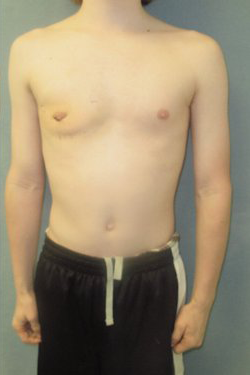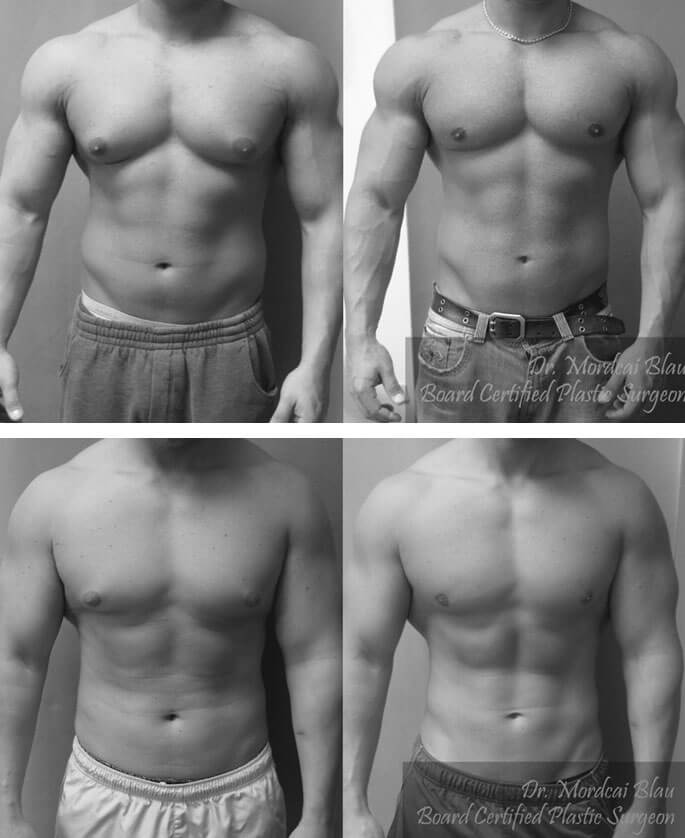Understanding Breast Asymmetry
Breast asymmetry occurs when the breasts are not of equal size. In men, breast asymmetry can include unilateral as well as bilateral Gynecomastia. The categories of breast asymmetry include the following:
Unilateral
This occurs when only one breast has gynecomastia. The other breast is normal in size and shape.
Bilateral Asymmetry
This occurs when both breasts have gynecomastia, to a different degree. The differences between the amount of glandular tissue of each breast can include:
- Size (diameter & height)
- Shape (tubular, flabby or saggy)
- Location on the chest wall (medial versus more lateral and inferior versus superior locations)
- Areolas (smaller versus larger diameters, flat versus pyramid shapes)
- Nipples (varying degrees of inversion or protrusion of the nipples, smaller versus larger diameter)
Through a study of my patients, I have found that more than 80% of male breasts are not symmetrical, but the severity varies. Patients should take this into consideration and examine their chests prior to surgery.
The conditions that make up asymmetry can often be corrected to some degree. It is very individual and varies from patient to patient. Every prospective surgical candidate should discuss this condition with an experienced plastic surgeon prior to surgery. The plastic surgeon’s role is to educate each individual patient as to the possible degree of improvement that can be realistically achieved in his particular case.
Often the areola shrinks when gynecomastia excision is performed. In more pronounced cases, the areola may be larger. Thus, when the glandular tissue is removed, the areola symmetry may improve.







